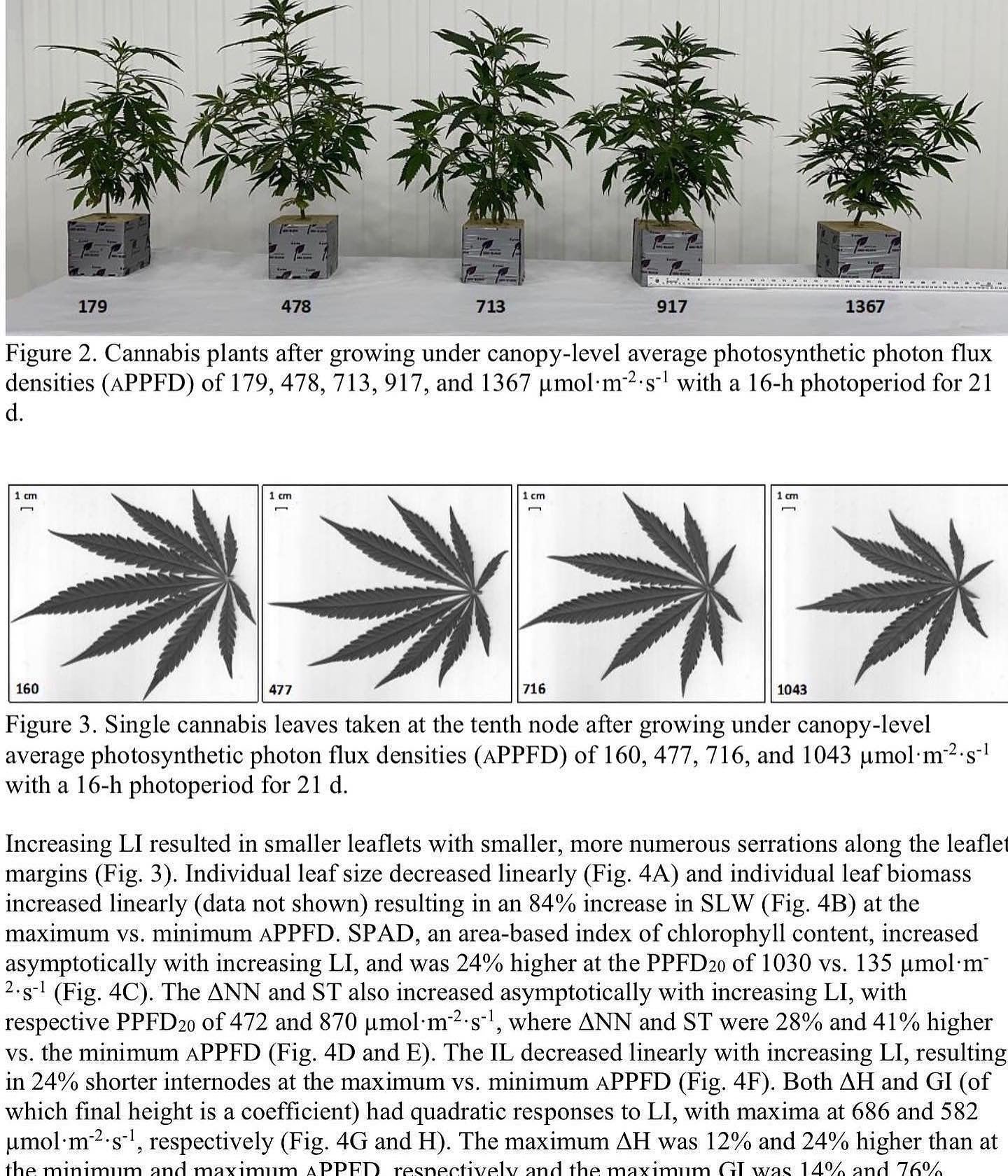The Optimal Veg Light Intensity: Cutting Veg Time While Building Stronger Plants
26 maggio 2023 – Danielle Daly

Welcome back to our blog series, where we combine real-world grower results with the latest plant science. Today, we’re digging into one of the most important—and misunderstood—factors in plant cultivation: the optimal vegetative (Veg) Photosynthetic Photon Flux Density (PPFD) and how spectrum plays a role in shaping growth.
How Much Light in Veg?
The “right” Veg PPFD depends on your growing goals, but research suggests a range of 600–900 PPFD, and in some cases 1000+ PPFD, delivers compact, high-quality growth—especially for vertical growers where space is at a premium (Zhen, 2021; Eaves et al., 2019).
This higher intensity, paired with the correct spectrum, encourages dense plant structure, abundant bud sites, and a stronger foundation for flower.
Why Spectrum Matters as Much as Intensity
Light intensity largely drives yield potential, while spectrum strongly influences plant morphology (structure, leaf thickness, internode spacing) and secondary metabolite production. With the right spectrum, you can:
- Shorten Veg cycles without sacrificing plant health.
- Build strong, compact plants that can hold heavy flowers.
- Reduce microbial load on plant surfaces.
That’s exactly why our Nova Sun Veg + Mom Spectrum is built with:
- Triple Blue Peaks (including 437nm) – Blue light reduces stem elongation, creates tighter internodes, and thickens leaves (Hogewoning et al., 2010; Magagnini et al., 2019). The 437nm wavelength has also been shown to reduce microbial populations (Kim et al., 2013).
- Green Light – Penetrates deeper into the canopy than blue or red, driving photosynthesis in shaded leaves and allowing higher PPFD without stress (Smith et al., 2017; Johkan et al., 2012).
- Balanced Red Zones – Maintain overall growth balance without pushing premature stretch.
Lessons from Nature
In nature, summer sunlight—when vegetative growth is strongest—contains a higher proportion of blue light. This natural seasonal signal tells plants to build structure rather than stretch. Our upgraded Veg + Mom Series mimics this seasonal pattern
Low Light: The Hidden Veg Killer
Low light levels don’t just slow growth—they change growth patterns entirely. Insufficient PPFD often causes:
- Photoinhibition – Plants can’t maintain optimal photosynthesis (Long et al., 1994).
- Stretching – Low light triggers elongated stems and thin leaves, wasting valuable vertical space.
For vertical farms, or any grow where space is limited, this is costly. Pushing higher PPFD with a blue-enhanced spectrum during Veg maximizes every inch of your canopy and sets you up for bigger, denser yields in flower.
Light Spectrum Tips for Veg Success
- Aim for 600–900+ PPFD in Veg, adjusting based on cultivar and grow method.
- Use a blue-enhanced spectrum (e.g., our Nova Sun Veg + Mom) to promote compact, dense growth and reduce stretch.
- Include green wavelengths to improve canopy penetration and photosynthesis efficiency in lower leaves.
- Maintain a balanced mix of colors for optimal plant health.
In Summary
Pushing plants with the right intensity + spectrum during Veg can:
- Cut veg time
- Build stronger, more compact plants
- Reduce microbials
- Increase flower yields and quality
The combination of high PPFD and balanced blue-green-red spectrum isn’t just theory—it’s backed by research and validated in commercial facilities we work with every day.
Key References
- Magagnini, G., et al. (2019). Light spectrum affects growth and cannabinoid profile of Cannabis sativa.
- Hogewoning, S.W., et al. (2010). Blue light dose-responses of leaf photosynthesis, morphology, and chemical composition.
- Kim, M.J., et al. (2013). Blue light reduces microbial populations on plant surfaces.
- Smith, H.L., et al. (2017). Green light drives photosynthesis more efficiently in strong white light.
- Johkan, M., et al. (2012). Effect of green light wavelength and intensity on photosynthesis and growth.
- Zhen, S., Bugbee, B. (2020). Far-red photons in photosynthetic photon efficiency.
- Zhen, S. (2021). Photobiological efficiency in high-PPFD environments.
- Eaves, J., et al. (2019). High-intensity lighting in controlled environments.
- Long, S.P., et al. (1994). Photoinhibition of photosynthesis in nature.






0 commenti